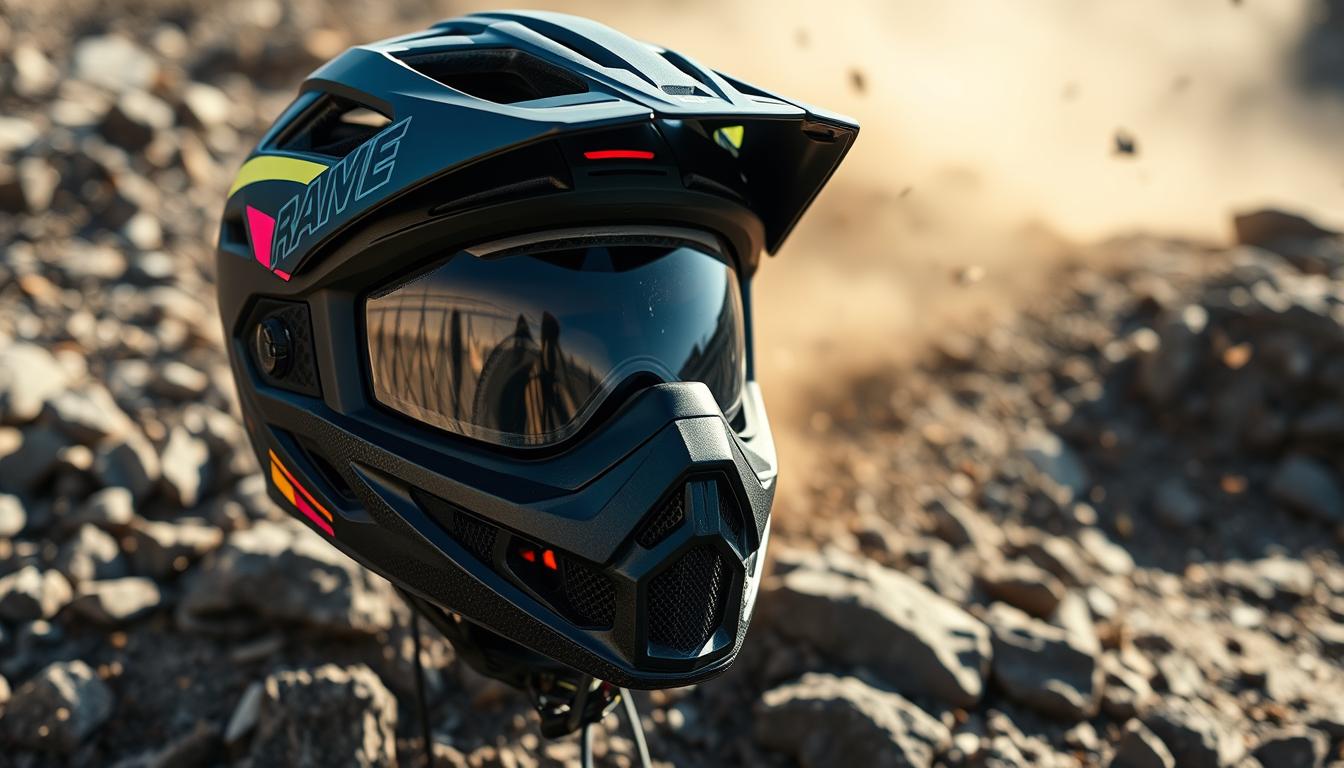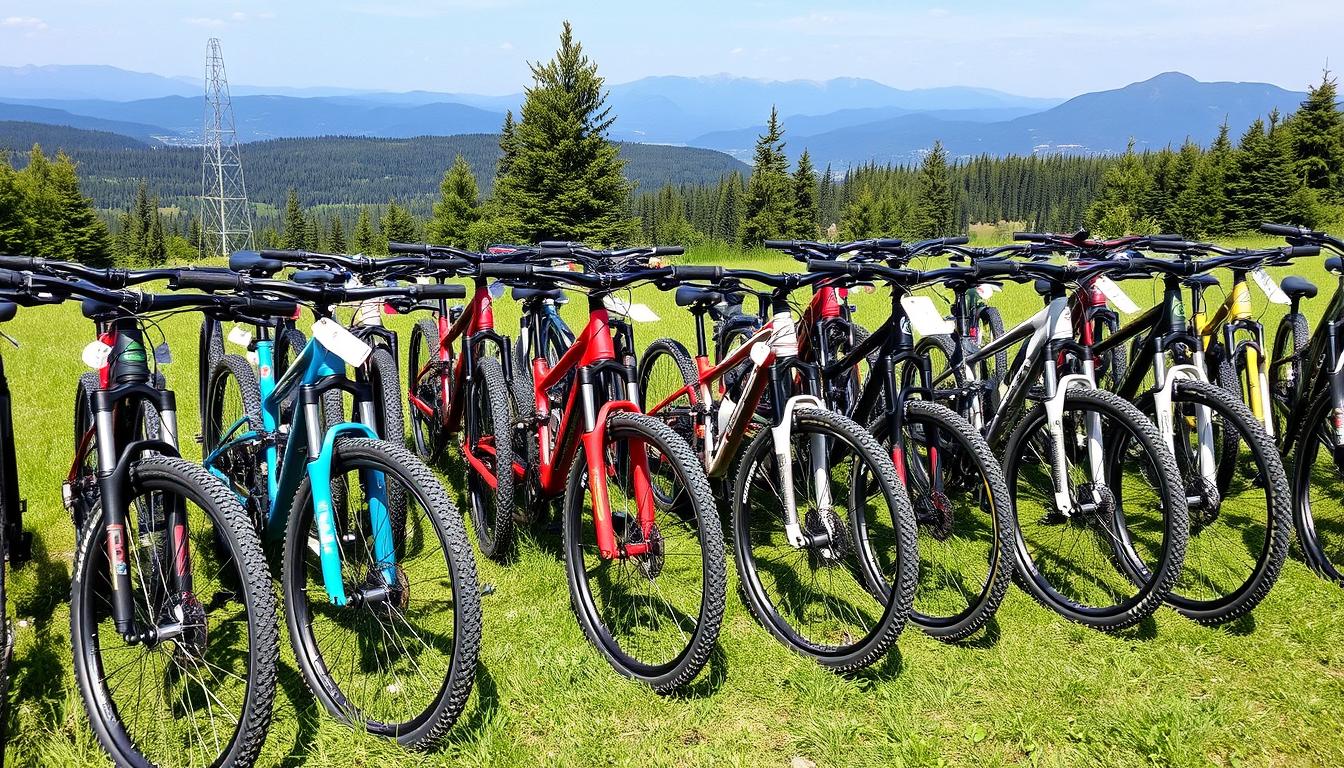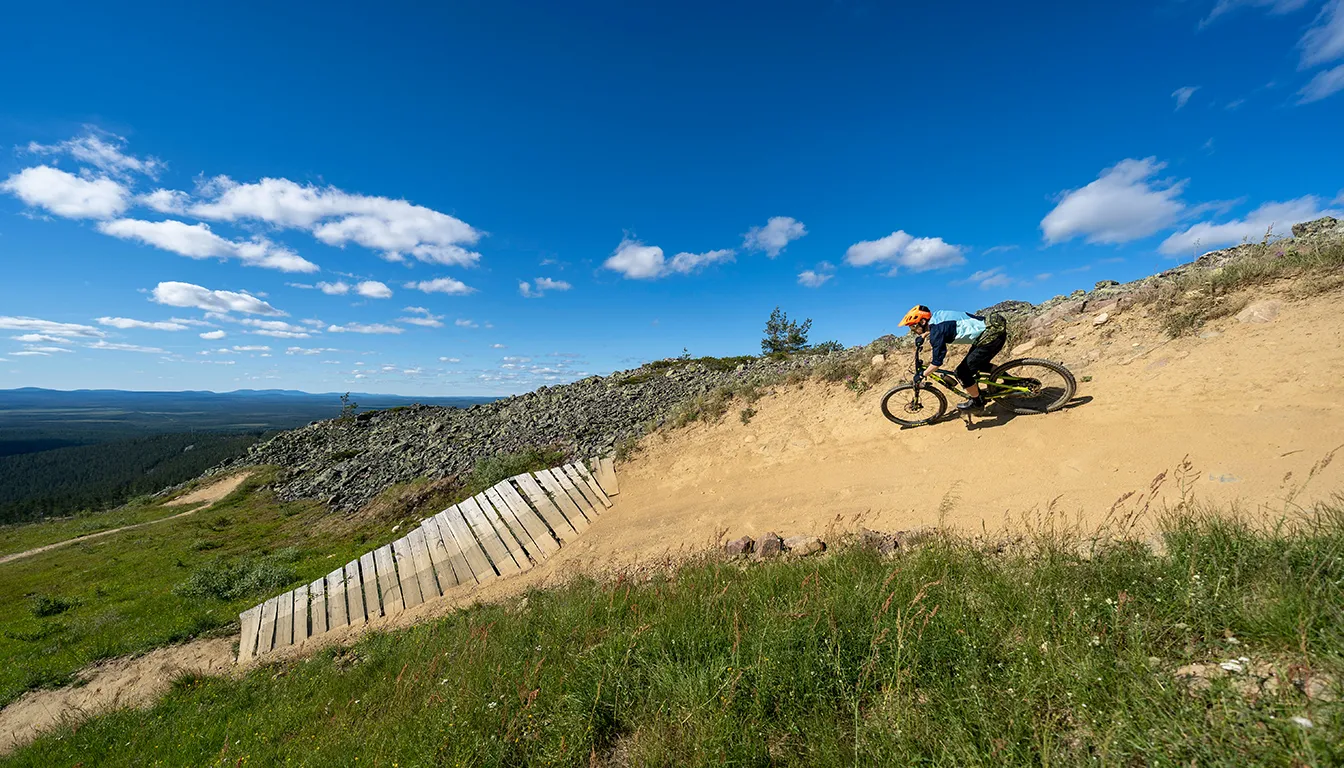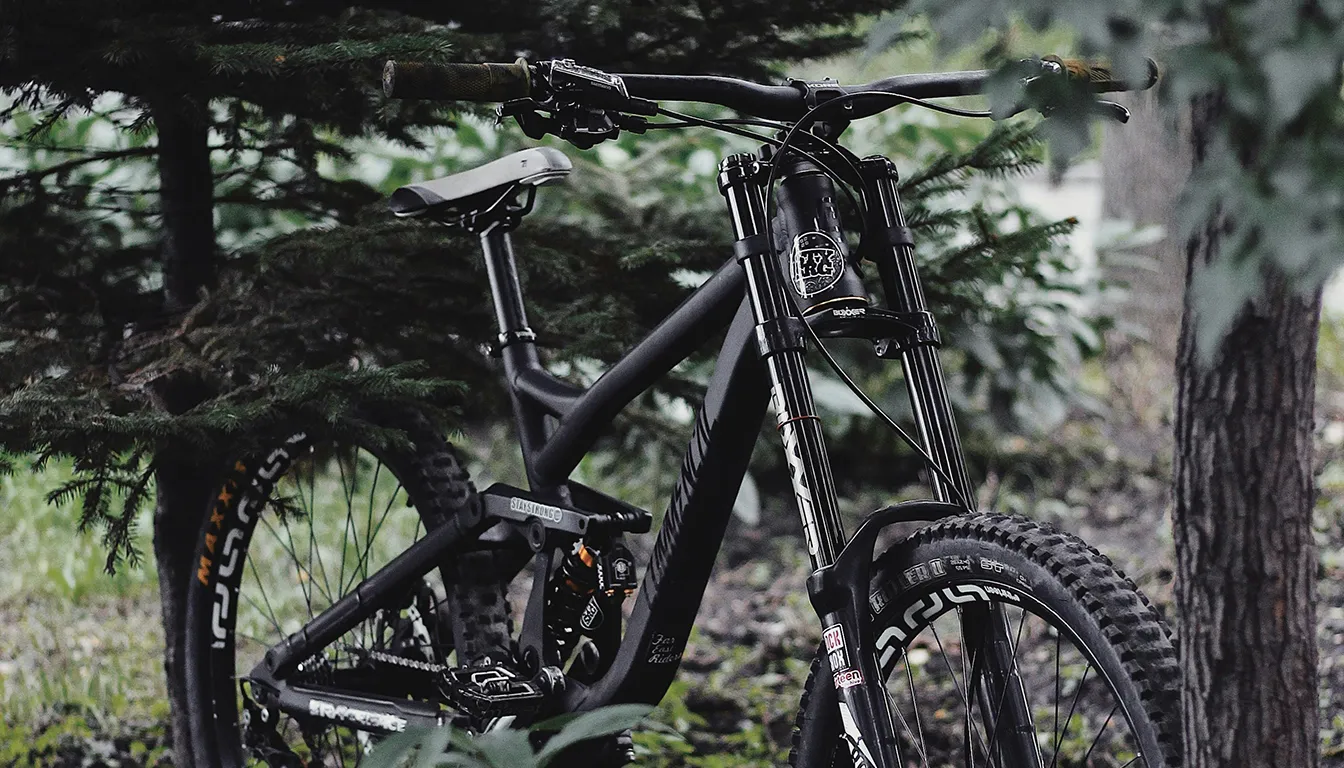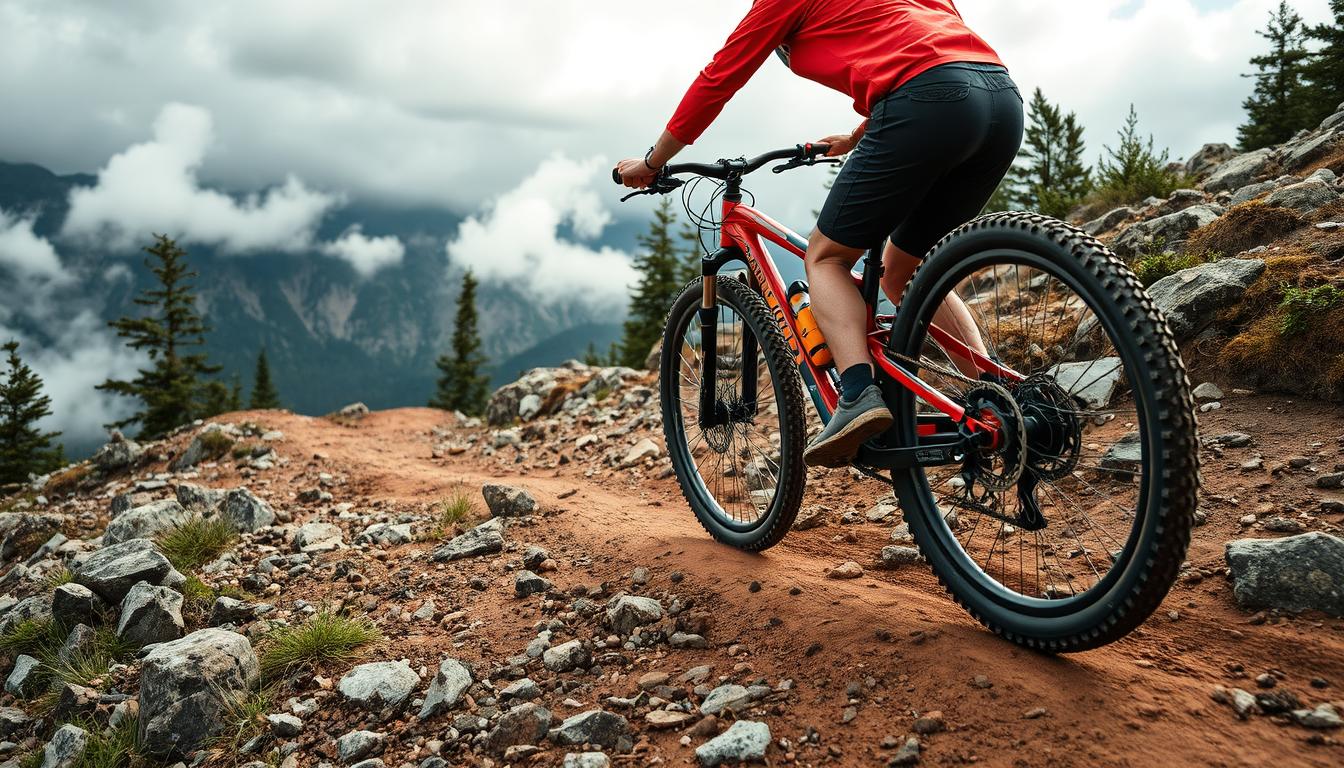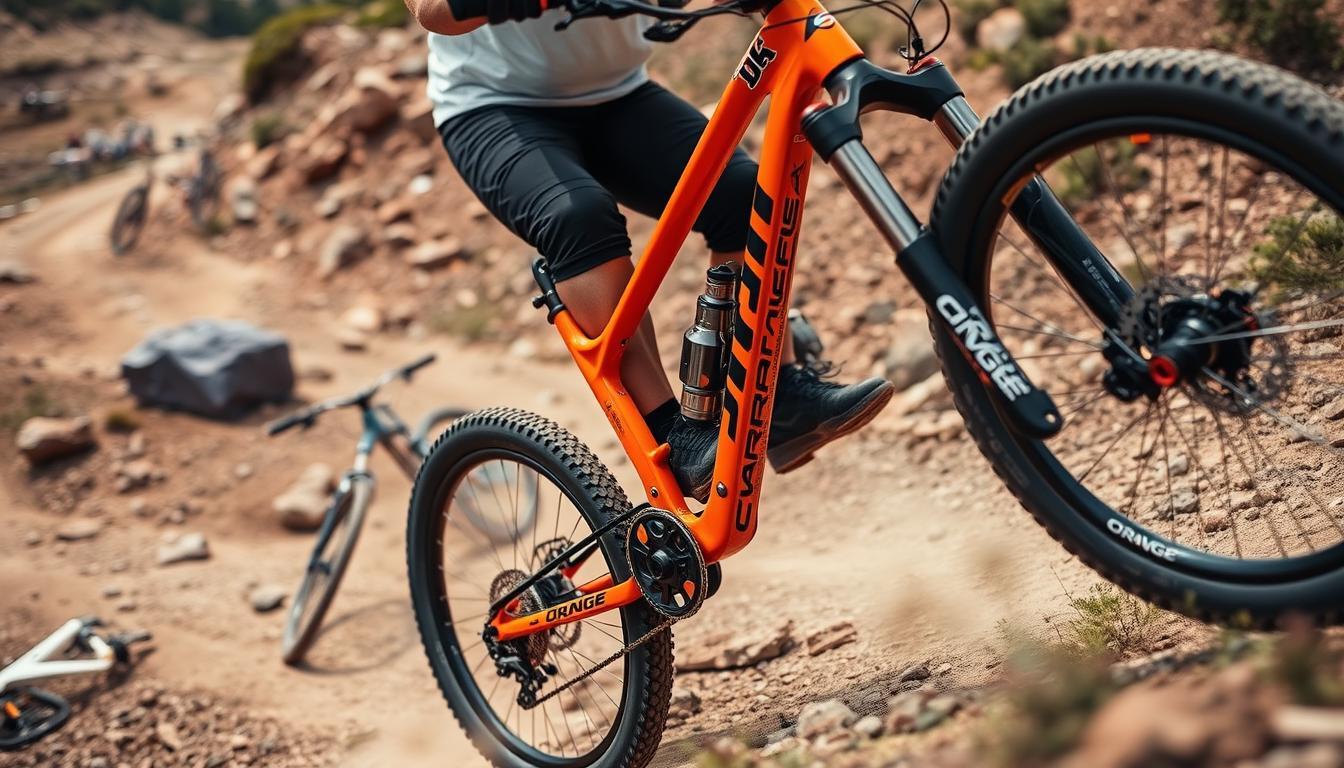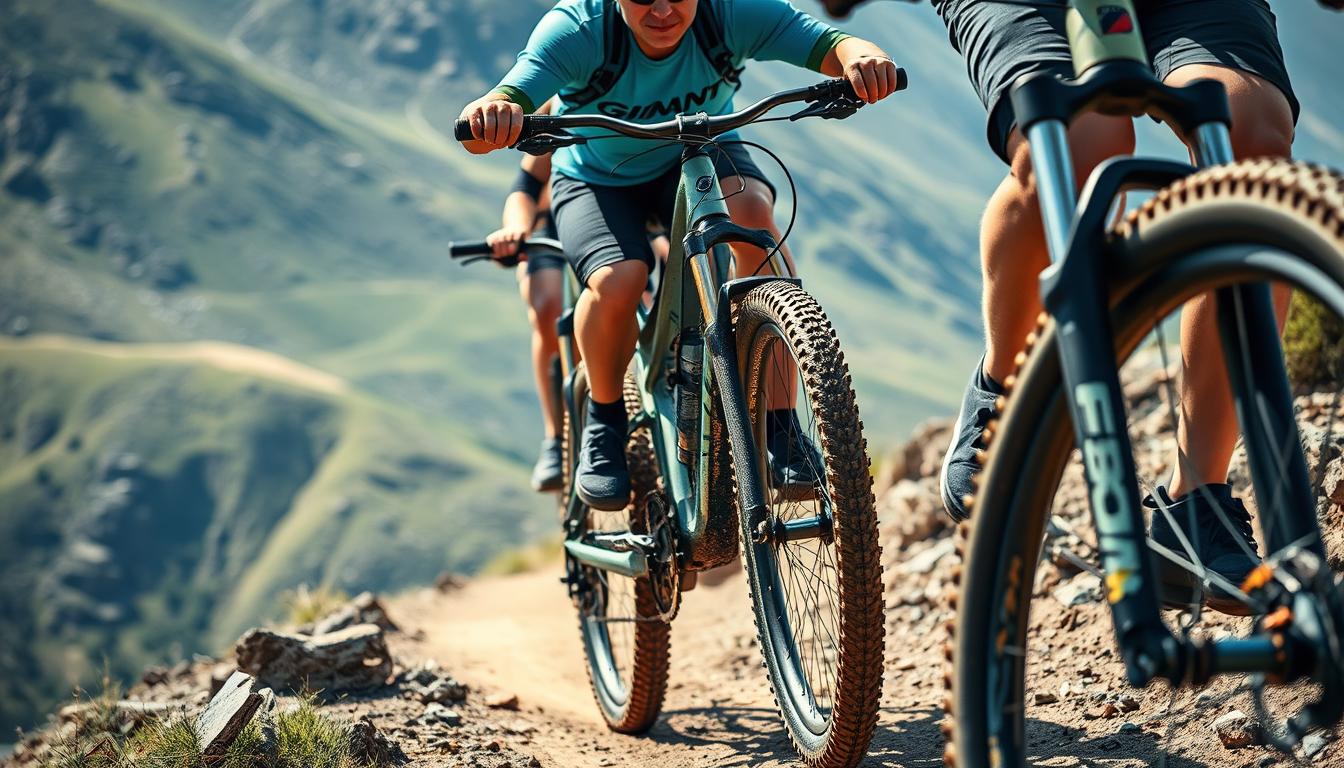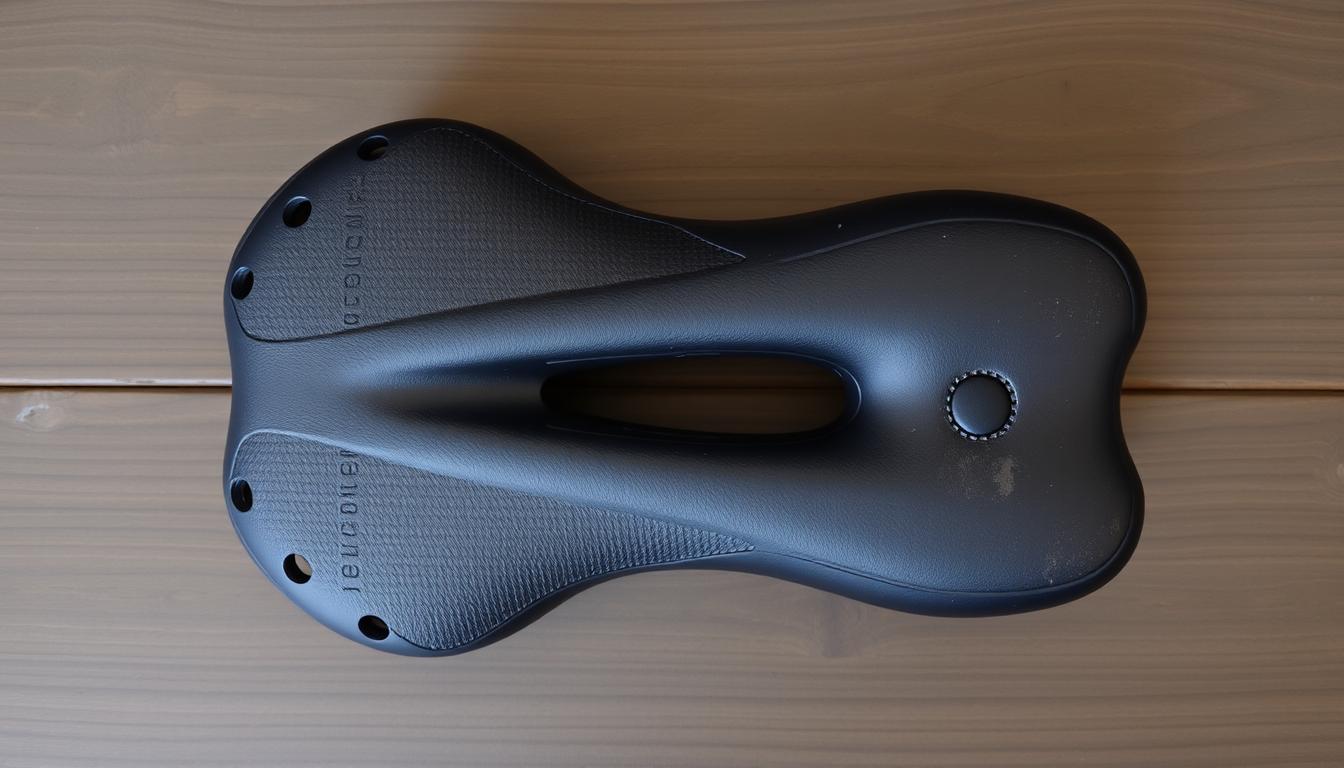Picking the right full face mountain bike helmet is crucial for top mountain biking safety. This is especially true in tougher trail conditions. In the last thirty years, the trend has shifted. Riders now prefer trail helmets over full face ones in risky places like bike parks. This change is worrisome because serious injuries, which better helmets could prevent, are happening.
For example, two bikers who crashed last weekend would’ve had less severe injuries with full face helmets.
Nowadays, bikes are versatile and can handle various riding styles. Yet, many ignore the extra safety full face helmets provide on rough terrain. It’s wise to choose helmets that protect well as the danger is real when you push your limits. Good news: you can find excellent full face helmets for under £100. This shows you don’t need to spend a lot for great safety gear.
When looking for helmets, think about enduro-style full faces. They’re light and keep your head cool but safe. Taking time to learn about all the helmet types will boost your safety and fun in mountain biking. If you’re keen to dive into this exciting activity, see this beginner’s guide.
Understanding the Safety Benefits of Full Face Mountain Bike Helmets
Choosing the right helmet for mountain biking is key to staying safe. Full face helmets offer top-notch protection. They safeguard not just the head but also the face, making them perfect for tough terrains.
Enhanced Protection Against Head Injuries
Protective gear is critical when cycling. Head injuries make up a large part of cycling accidents. Full face mountain bike helmets provide excellent protection. Studies say they can lessen head and brain injury risks by 63% to 88%. This protection is crucial, especially for downhill biking or high-speed rides.
Facial Protection: Why It Matters
Facial injuries are common among cyclists, just like head injuries. Using helmets can reduce face injuries by about 65%. Full face helmets have a strong design that shields the face during falls. This makes them very valuable for riding in bike parks or downhill courses. Choosing a full face helmet boosts mountain biking safety overall.
When to Choose a Full Face Mountain Bike Helmet
Knowing when to wear a full face mountain bike helmet can make your ride safer and more fun. Bike parks and tough terrains often need stronger protection.
Riding in Bike Parks: Increased Risks
Riding in bike parks brings higher risks due to fast speeds and tricky features. Keeping safe in these areas is crucial. Full face helmets help protect against injuries from jumps and obstacles.
Assessing Terrain Difficulty and Speed
It’s vital to check the trails before you ride. Think about how hard the paths are you want to tackle. Tough terrains mean you should wear full face helmets to deal with falls safely and ride with confidence.
The Importance of Comfort in Helmet Choice
Comfort in helmets matters a lot. It means you can ride longer without feeling bad, making you more likely to wear the helmet. The right balance of fit, protection, and air flow keeps mountain bikers focused and safe.
Comparing Full Face Mountain Bike Helmets to Trail Lids
When it comes to mountain biking, choosing the right helmet is crucial. Full face helmets and trail lids offer different safety features. It’s important for riders to know these differences to make safe choices on the trails.
Safety Features of Full Face Helmets
Full face helmets provide strong safety features, like chin guards and more coverage. Helmets like the Smith Mainline and the Fox Rampage Pro Carbon MIPS are great for downhill biking. They meet safety standards and use MIPS technology to protect the brain. The Mainline helmet also has lightweight Koroyd for impact absorption and vents for cooling.
Disadvantages of Trail Lids
Trail lids are lighter and offer more air flow, but they don’t protect as much as full face helmets. Choosing a trail lid might increase the risk of injury in high-impact accidents. It’s vital to pick gear that suits your riding style for safety. For more tips on safe riding, check out this guide on safe riding techniques.
Investing in Quality: What to Look for in a Full Face Mountain Bike Helmet
Choosing a quality full face mountain bike helmet is key. The right helmet not only keeps you safe but also improves your ride. It’s crucial to know what makes a helmet good.
Material and Weight Considerations
The material of a helmet affects both safety and comfort. Lighter helmets are comfier and good for long rides. They also offer better protection and last longer. Look for helmets that meet safety standards like EN 1078 in Europe or CPSC 1203 in the USA.
Ventilation for Climbing and Descending
Good ventilation is key for tough climbs and fast descents. Helmets with well-placed vents keep you cool and dry. This keeps you focused and comfy during challenging rides. Proper airflow prevents sweat from bothering your eyes.
Fit and Comfort: Finding the Right Size
The fit and comfort of your helmet are crucial. A helmet that doesn’t fit right won’t protect you well. It’s important to try different brands and consult sizing guides. A well-fitting helmet feels snug but not too tight. Special padding in full-face helmets improves fit and safety.
Explore different helmets to find one that suits your style. Quality helmets ensure your future rides are both safe and fun. For more tips on choosing the best helmet, check out this comprehensive guide.
Conclusion
Choosing the right full face mountain bike helmet is very important for safety. It keeps riders safe over different terrains at varying speeds. High-speed mountain biking has real risks. A helmet meeting ASTM 1952-15/2032-15 standards can lessen these dangers.
A good quality helmet protects well against head and face injuries. It also makes riding more comfortable. Things like weight, how much air gets through, and how it fits matter a lot. Today, there are many helmets to fit what each rider likes and can afford.
By following safety tips and picking a reliable helmet, biking becomes more fun and less worrying. It doesn’t matter if you’re on rocky paths or in bike parks, safety should come first. This makes sure all your bike adventures are good memories.
FAQ
What are the main benefits of a full face mountain bike helmet?
A full face mountain bike helmet offers top-notch safety. It protects your head and face well. These helmets have strong outer shells and padding that absorbs impacts.
When should I use a full face mountain bike helmet?
Wear a full face helmet in bike parks, on tough terrains, or when going fast. These places have a higher risk of accidents and injuries.
How does a full face helmet compare to a trail lid?
Full face helmets provide extra safety, with features like chin guards and more coverage. Trail lids are lighter and cooler but don’t protect as much during big accidents.
What should I look for when investing in a full face mountain bike helmet?
Look for comfort, which comes from materials and weight. Consider how well it ventilates to keep you cool. Make sure it fits well for safety and comfort.
Why is comfort important in a full face helmet?
Comfort matters because a helmet that fits well gets used more often. This can greatly improve your safety when you’re out riding.
Are full face mountain bike helmets suitable for all riders?
Full face helmets are great for protection. But, the right choice also depends on how you ride, where you ride, and what feels good for you.
How do I ensure I get the right size for my full face helmet?
To find the best fit, check size charts and try different brands. A good helmet should be snug but comfortable, allowing you to move freely.
